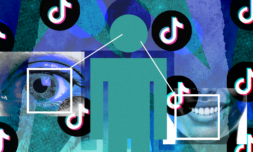Consuming content to consume products
Back in 2020, Forbes branded TikTok as ‘digital crack cocaine’ because of its ability to deliver irregular and hyper-frequent dopamine rushes to our brains the more we scroll.
Our brain’s reward system is constantly being reactivated with each swipe of our thumbs thanks to the element of surprise and unpredictability of content, a process many psychologists have likened to the experience of using a slot machine or, well, drugs.
There’s no doubt that the viewing format of TikTok and Instagram Reels has us psychologically addicted. When one great video is over, we are left wondering what gold mine we might be about to strike next.
Could the next clip offer us a much-needed laugh? A useful lifehack? A must-have product?
Although giving us the ‘brain-feel-good’ sensation explains the global addiction to TikTok as a platform, what is it about the app that makes us want to give away all our money, and how do we get past the urge to buy impulsively?
A society starved of community
It’s worth examining the kind of relationship Gen Z has with the brands and companies they engage with.
Unlike Millennials who grew up shaping their style around products they discovered in monthly magazines, popular movies, music videos, or through friends – young people today are developing their likes and dislikes at hyper-speed thanks to the internet.
With such abundance on offer, Gen Z are in a constant state of curating (and re-curating) the lists of brands they engage with because all purchases are intricately interwoven with their identity. The items they buy, wear, and use are tools to show the world who they are and what values, beliefs, and trends they subscribe to at any given time.
Consumerism in the digital age isn’t just about utility or need, but more about making a statement.
Being an owner of a product stands reinforces not only the current and bound to change identity of young people, but also signals to their peers which ‘groups’ they fit into. This is exemplified by the rise and fall of so many ‘aesthetic cultures’ taking off on TikTok – think VSCO girl, clean girl, mobwife, cottagecore, and more.
Having a product that everyone recognizes, wants, or also owns gives individuals a sense of belonging in a world where young people feel more disconnected than ever. Purchasing items online helps users slot themselves into the group they strive to be part of.
Does this jargon sound at all familiar?
“Oh yeah, I would die without my Stanley cup too! Snail mucus serum is also my holy grail skincare item.”
It goes without saying that influencers and paid creators have immense power to dictate society’s spending habits. The proof is in the name ‘influencer’, after all.
This is especially the case when internet stars we like or admire upload a video raving about a certain product. This type of ‘tried-and-tested’ marketing boosts the likelihood that we will purchase an item, because we see the person’s personality, appearance, or lifestyle as desirable and achievable – if we only by that ‘thing’.
However, most of these videos are paid promotion.
Even though new laws require influencers to state outright when their content is advertising, this doesn’t always stand for items they are gifted and later gush about. Products that audiences will pay full price for, even if they can’t really afford it.
On the other hand, it’s important to remember that a large majority of the gadgets we’re being sold are priced cheaply because they are cheap. All users have to do is scroll through Amazon reviews of popular sunset lamps and other neon light fixtures to uncover thousands of complaints about them breaking or overheating within days of use.
Aside from being a waste of money in many cases, the mass consumption of all of these unnecessary items is an environmental nightmare. Most items are poorly designed and fashioned using cheap plastic, meaning they will need to be replaced a number of times – with the thrown out items destined to sit in landfill for all eternity.
Avoiding the pull of the TikTok Shop
Admitting is the first step, or so they say.
Being honest with ourselves about how often we’re ‘adding item to cart’ based on content we’ve seen online can help us gauge how bad our propensity for unnecessary impulse buying truly is.
Taking physical stock of things we’ve purchased online – and trying to remember the last time we used them – is another way to help determine whether every online purchase we’ve ever made was actually necessary.
It could also be helpful for users to take a moment away from TikTok before hitting ‘confirm order’. I can’t tell you the number of times I’ve filled up my basket in the Sephora app before bed, gone to sleep, and woken up grateful I didn’t spend $150 on skincare or makeup products I’d wanted, but didn’t need.
Overall, practicing a bit more mindfulness and self-control has become essential when scrolling TikTok or Instagram, especially now that both platforms are digitally optimized to fulfil our desire to own more and more stuff for the sake of achieving ‘perfection’ or ‘belonging’.
In the end, we often aren’t thinking about buying anything before picking up our phones. We’re just bored. Remembering that is the key to avoiding an impulse buy – and to saving our hard earned coin.





















